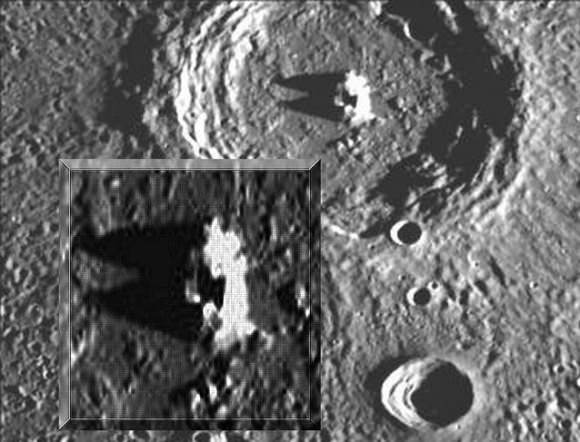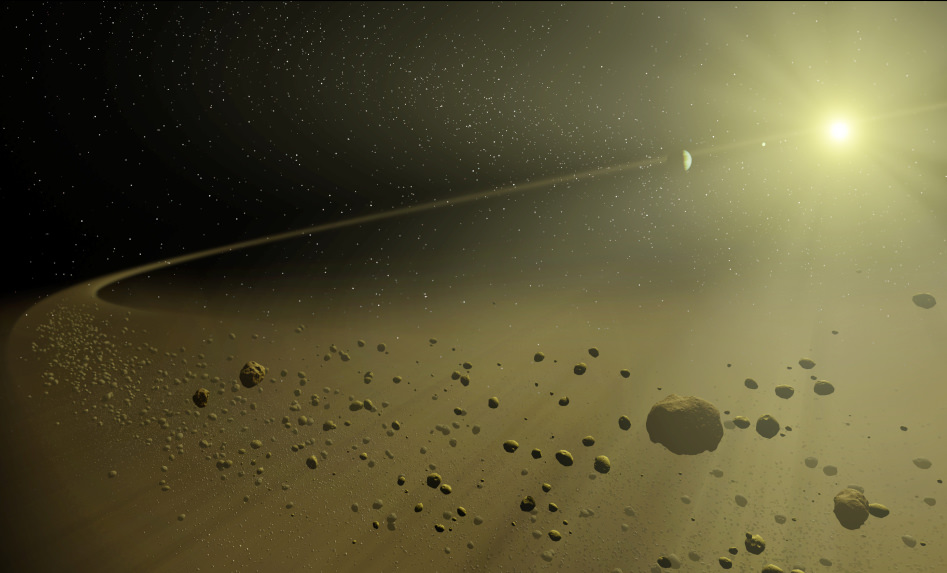[/caption]
Recently, some researchers speculated on what types of observational data from distant planetary systems might indicate the presence of an alien civilization, determined that asteroid mining was likely to be worth looking for – but ended up concluding that most of the effects of such activity would be difficult to distinguish from natural phenomena.
And in any case, aren’t we just anthropomorphizing by assuming that intelligent alien activity will be anything like human activity?
Currently – apart from a radio, or other wavelength, transmission carrying artificial and presumably intelligent content – it’s thought that indicators of the presence of an alien civilization might include:
• Atmospheric pollutants, like chlorofluorocarbons – which, unlike methane or molecular oxygen, are clearly manufactured rather than just biogenically produced
• Propulsion signatures – remember how the Vulcans detected humanity in First Contact (or at least they decided we were worth visiting after all, despite all the I Love Lucy re-runs)
• Stellar engineering – where a star’s lifetime is artificially extended to maintain the habitable zone of its planetary system
• Dyson spheres – or at least their more plausible off-shoots, such as Dyson swarms.
And perhaps add to this list – asteroid mining, which would potentially create a lot of dust and debris around a star on a scale that might be detectable from Earth.
There is a lot of current interest in debris disks around other stars, which are detectable when they are heated up by the star they surround and then radiate that heat in the infra-red and sub-millimeter wavelengths. For mainstream science, debris disk observations may offer another way to detect exoplanets, which might produce clumping patterns in the dust through gravitational resonance. Indeed it may turn out that the presence of a debris disk strongly correlates with the existence of rocky terrestrial planets in that system.
But now going off the mainstream… presuming that we can eventually build up a representative database of debris disk characteristics, including their density, granularity and chemistry derived from photometric and spectroscopic analysis, it might become possible to identify anomalous debris disks that could indicate alien mining activities.

For example, we might see a significant deficiency in a characteristic element (say, iron or platinum) because the aliens had extracted these elements – or we might see an unusually fine granularity in the disk because the aliens had ground everything down to fine particles before extracting what they wanted.
But surely it’s equally plausible to propose that if the aliens are technologically advanced enough to undertake asteroid mining, they would also do it with efficient techniques that would not leave any debris behind.
The gravity of Earth makes it easy enough to just blow up big chunks of rock to get at what you want since all the debris just falls back to the ground and you can sort through it later for secondary extraction.
Following this approach with an asteroid would produce a floating debris field that might represent a risk to spacecraft, as well as leaving you without any secondary extraction opportunities. Better to mine under a protective canopy or just send in some self-replicating nanobots, which can separate out an enriched chunk of the desired material and leave the remainder intact.
If you’re going to play the alien card, you might as well go all in.
Further reading: Forgan and Elvis. Extrasolar Asteroid Mining as Forensic Evidence for Extraterrestrial Intelligence.
Some useful tips on asteroid mining can be found here.



